This article is part of our series on tempura. We’ve also written about the science of tempura oil and how to choose oil for tempura which covers the life cycle of the oil and how it impacts flavor. Go to the bottom of the article to see a list of oil blends used by famous restaurants around Japan.

If you were to go around asking different tempura chefs what oil they used in their restaurant, you’d be surprised by how many different answers you’d get. It’s not uncommon for them to have an oil, or blend of oils, that they swear by.
While it may seem that there is no consensus when it comes to choice of oil, there does exist some method to the madness, and each chef has simply tweaked it to suit their style of tempura. Firstly, let’s cover some of the more common oils in Japan before talking about blends.
What oil is traditionally used for tempura?
What is Japanese salad oil?
As misleading as it sounds, salad oil (サラダ油) is actually a highly refined blend of vegetable oils that give the oil an extremely neutral profile and light viscosity. Because of that, it’s marketed as light enough to use as salad dressing, hence its name.
The Japanese Agricultural Standards (JAS) have certain requirements surrounding ingredients used in the oil and the final characteristics of the oil before the label “salad oil” can be used, which means you can expect a product that performs consistently regardless of which brand you use. The refinement process increases the cost of this oil slightly, though the base materials to make the oil tend to be cheap and thus evens out the cost.
Its neutral characteristic makes it well suited as a base for blending other more flavorful oils such as sesame seed oil to lightly flavor your tempura. You can sometimes find it outside of Japan, with the most common brand being Nissin.
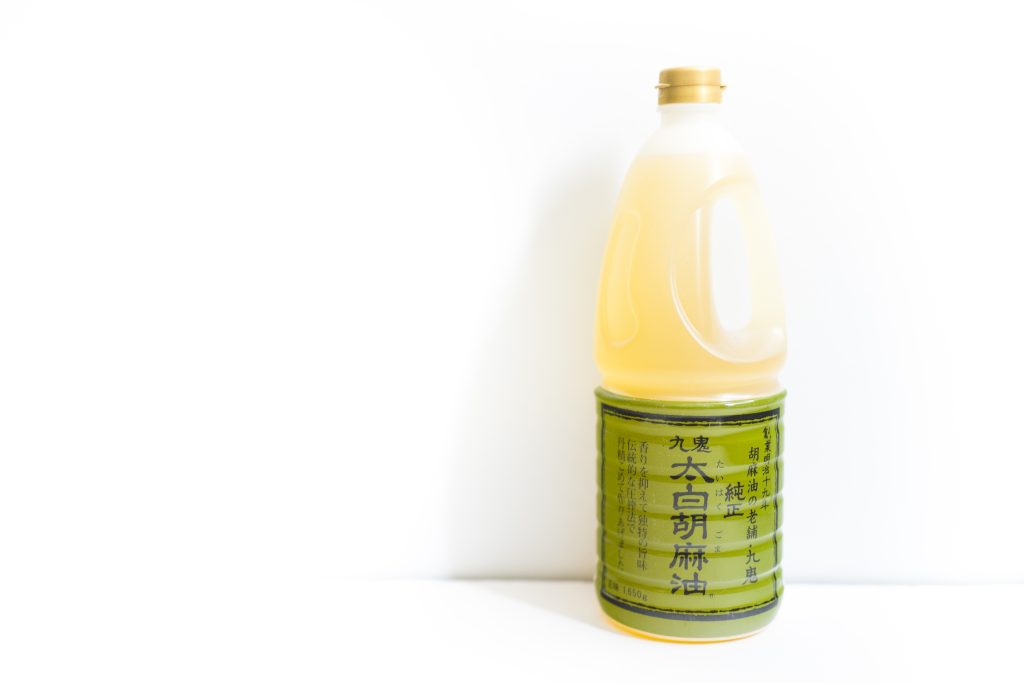
What is Japanese white squeezed oil?
White squeezed oil (白絞油) is the direct translation of what is known as commercial deep frying oil. Compared to salad oil, it is much less refined and thus has a fuller body and more flavor to it. It’s known as the generic oil that deep frying restaurants use due to its high resistance to deterioration when heated multiple times.
As it’s less refined, it’s darker in color and more importantly costs less. Therefore, it’s a real workhorse that you’d find at tendon and tonkatsu restaurants that have a huge lunchtime turnover of customers. You’d be less likely to find it at high end restaurants that use more expensive oils such as sesame seed oil. It is moderately stable and can be used at least a second time before needing to be replaced with fresh oil.
Historically white squeezed oil was made by refining canola oil. Overtime, both soybean oil, cottonseed oil and blends of all three started to be incorporated into the refinement process and are now sold under the same name. Unfortunately, white squeezed oil is almost impossible to find outside Japan unless you have connections to a restaurant supplier.
We have found white squeezed oil made from canola oil to be the least stable of all the variations of white squeezed oils and needs to be changed the most frequently. Conversely, we have found white squeezed oil made from cottonseed to be the most stable.
White squeezed oil is sometimes pre-blended with sesame seed oil specifically for frying tempura. If you buy tempura oil (天ぷら油) it’s almost certainly uses white squeezed oil as a base.
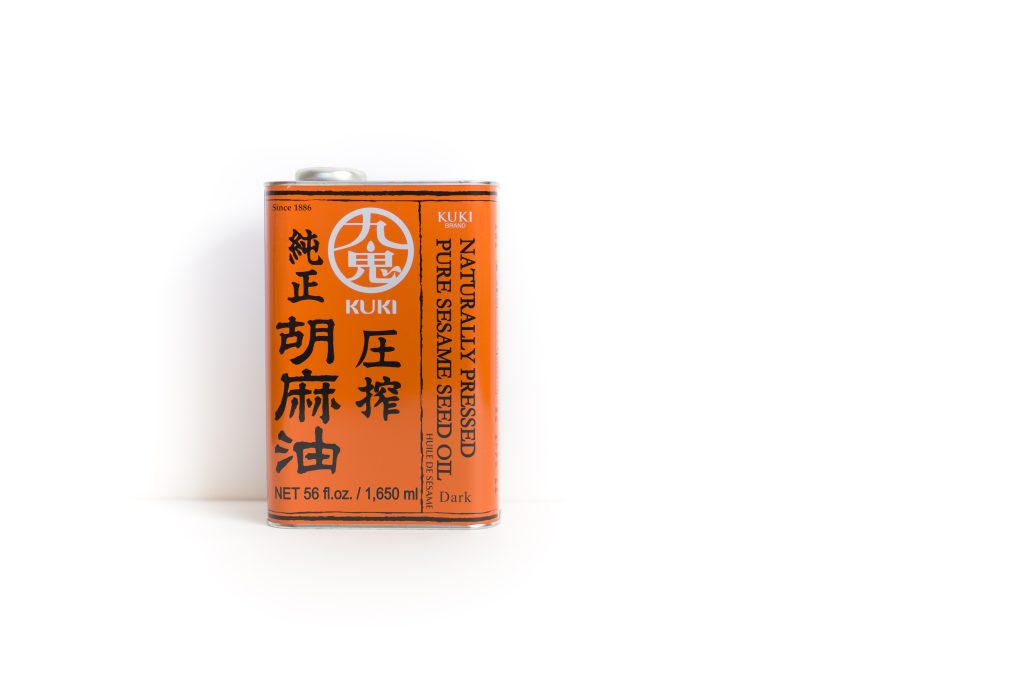
What are the types of Japanese sesame seed oil?
In Japan, there exists various gradations of sesame seed oil based on their degree of roast before pressing, from unroasted, to lightly roasted all the way to heavily roasted. You’ll find that most tempura restaurants blend a small amount of lightly roasted sesame seed oil into their oil as it lightly flavors the ingredients, so much so that the smell of sesame seed oil heating up is enough to cause tempura fans to salivate.
Taihaku sesame seed oil (太白ごま油)
Most people would associate sesame seed oil with its highly fragrant and almost nutty aroma, along with its dark amber color. Taihaku sesame seed oil is completely different. Difficult to find outside of Japan, it’s unroasted sesame seed oil with a neutral taste and aroma. This gives an extremely light color whilst still maintaining the richness you’d associate with sesame seed oil.
It is the gold standard tempura oil that famous restaurants all around Japan use as their base for frying tempura. It is more expensive than any other oil and thus will only be found at high end establishments. That being said, there is a limit of how expensive cooking oil can get and it’s not unheard of for some restaurants to change their oil 3 to 4 times in a single service even when using taihaku sesame seed oil.
This is before taking into account that unroasted sesame seed oil has a higher stability compared to salad or white squeezed oil and thus needs to be replaced less frequently, showing what some tempura chefs are willing to do to only present their customers with the most perfectly fried tempura.
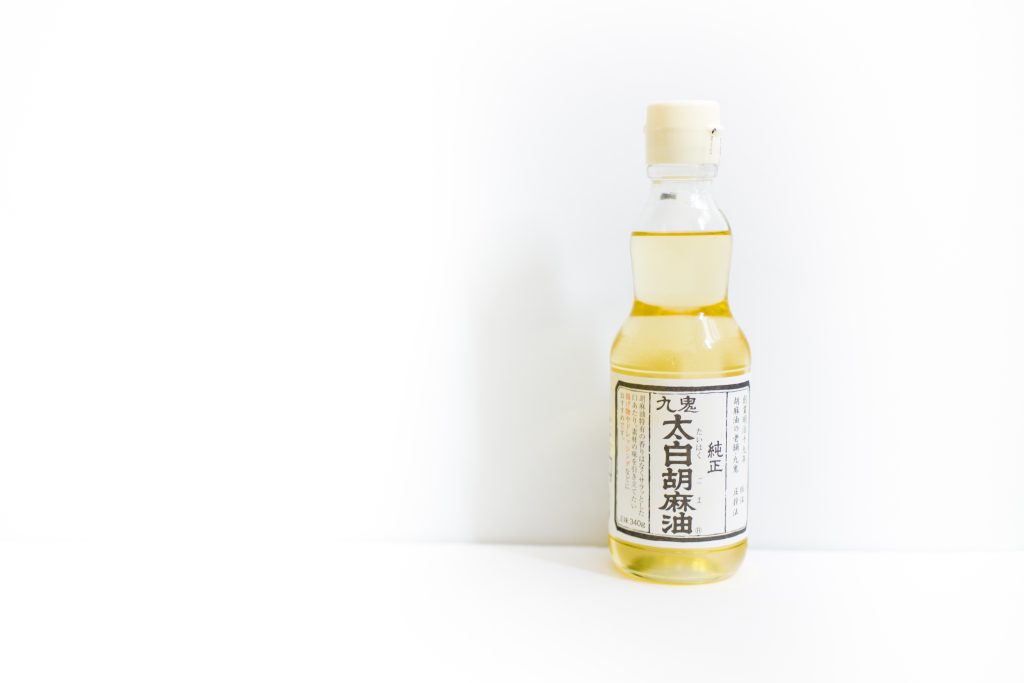
Lightly roasted sesame seed oil
Blending in some lightly roasted sesame seed oil to flavor tempura oil is typically done by restaurants that serve an omakase-style menu. Because these places are usually more expensive, they want to emphasize the freshness and natural taste of their ingredients and therefore do not want the taste of sesame seed oil to overpower.
There isn’t one single name for lightly roasted sesame seed oil as different companies have decided to go with their own brand name. For a few of the larger companies, their lightly roasted sesame seed oil is called:
- Kuki (九鬼)- Kanashiro sesame seed oil 金白胡麻油
- Kadoya (かどや)- Kinjirushi sesame seed oil 金印ごま油
- Maruhon (マル本)- Taikou sesame seed oil 太香胡麻油
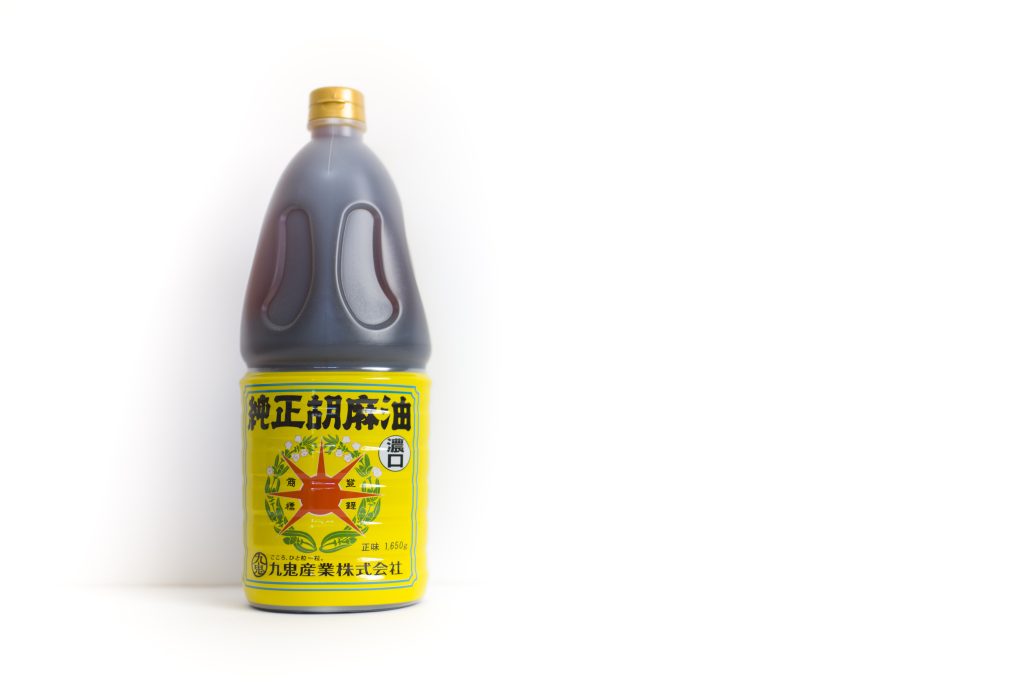
Medium roasted to dark roasted sesame seed oil
A lot of medium roasted sesame seed oil is simply labeled as junsei sesame seed oil (純正胡麻油). The word junsei simply means that the oil is made from 100% sesame seeds with no other added oils and therefore gives no indication of roast level. However, if no other information is provided you can assume that it will be of a medium roast.
The words koikuchi (濃口) will usually indicate a darker roast beyond medium whilst awaguchi (淡口) will indicate a slightly lighter roast.
These oils have a much stronger nutty taste and will also darken the crust of your tempura if mixed in at a high ratio. While you won’t find these oils used in high end tempura restaurants, you’ll find them used at tendon restaurants as the strong flavor can help to mask the taste of older oil. Because of their more pronounced taste, they also have the ability to transform normal ingredients into a perfectly satisfying and overall tasty meal. These oils are in no way inferior and simply produce a different style of tempura.
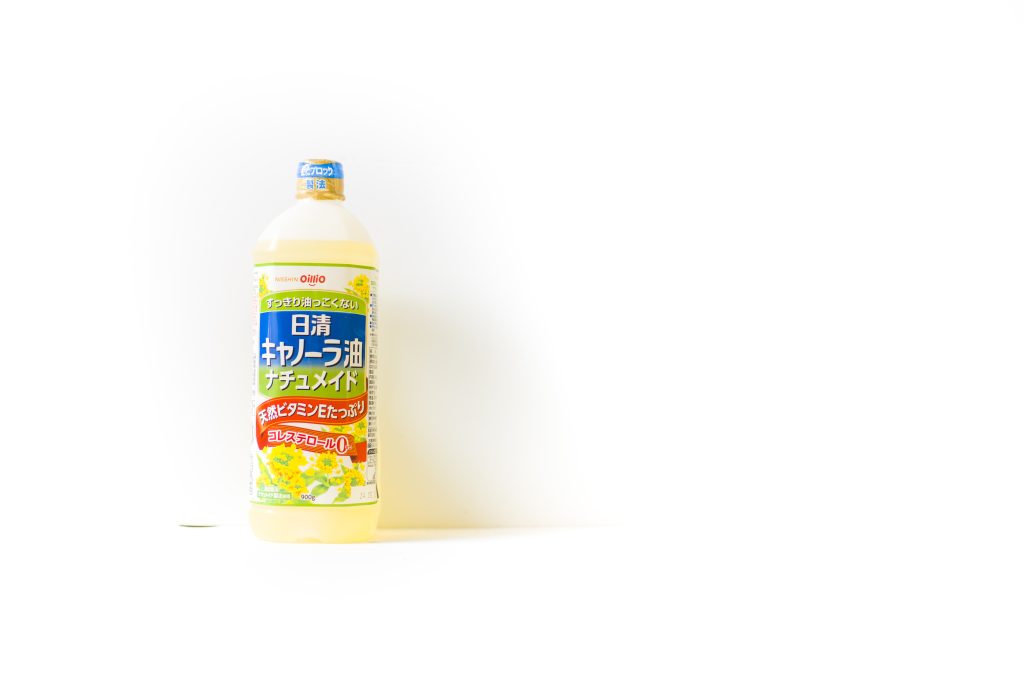
Other oils used for frying tempura
Besides the oils listed above, there exists several other neutral oils that you’ll find used to fry tempura in Japan. These are:
- Canola oil (菜種油)
- Rice bran oil (こめ油)
- Soybean oil (大豆油)
- Cottonseed oil (綿実油)
This list is by no means exhaustive.
Occasionally, you’d find chefs that opt to fry tempura without adding sesame seed oil, and instead choosing to use only neutral oil. This is rare.
Out of all the oils, canola oil is the one that needs no introduction. It holds household name status as the oil used for deep frying in Japan. It is known as rapeseed oil in some countries and is usually readily available at your local supermarket. Unfortunately, we feel that this reputation might not be warranted. From our testing, we have found canola oil to have a low stability, needing to be changed between every frying session. In blind tastings, we have also found it to be the most easily absorbed by food, leaving a slightly greasy aftertaste even when effort has to remove excess oil. Nonetheless, its lower price compared to other oils make it an attractive option for many.
We share the same opinion about soybean oil. While it is commonly found in white squeeze oil and tempura oil blends, it does not perform well when used alone due to its low stability. During testing, we have found both soybean and canola oil to absorb flavors from ingredients and then impart it into other ingredients. For example, it starts to take on fishy notes after multiple rounds of seafood tempura, giving a vegetable tempura fried after a muddy seawater kind of taste.
Cottonseed oil is a mid-tier oil with a moderate amount of stability. It’s commonly used to increase the reusability of oil blends that contain soybean and canola oil. It’s not the most common oil that you can buy for household use, but it presents good value for money if you can buy it.
On the complete opposite end of the spectrum is rice bran oil. In our opinion, rice bran oil is second only to unroasted sesame seed oil as a high quality tempura oil. It has a high stability allowing it to be used over and over again. In addition, it fries tempura with a rich and luxurious mouthfeel. Rice bran oil is our go to frying oil outside of Japan and we highly recommend it.
Unfortunately, rice bran oil is usually more expensive than canola or soybean oil and is thus used in smaller quantities. Rice bran oil is one of the few oils in Japan that are completely domestically produced due to the high amount of rice grown in Japan.
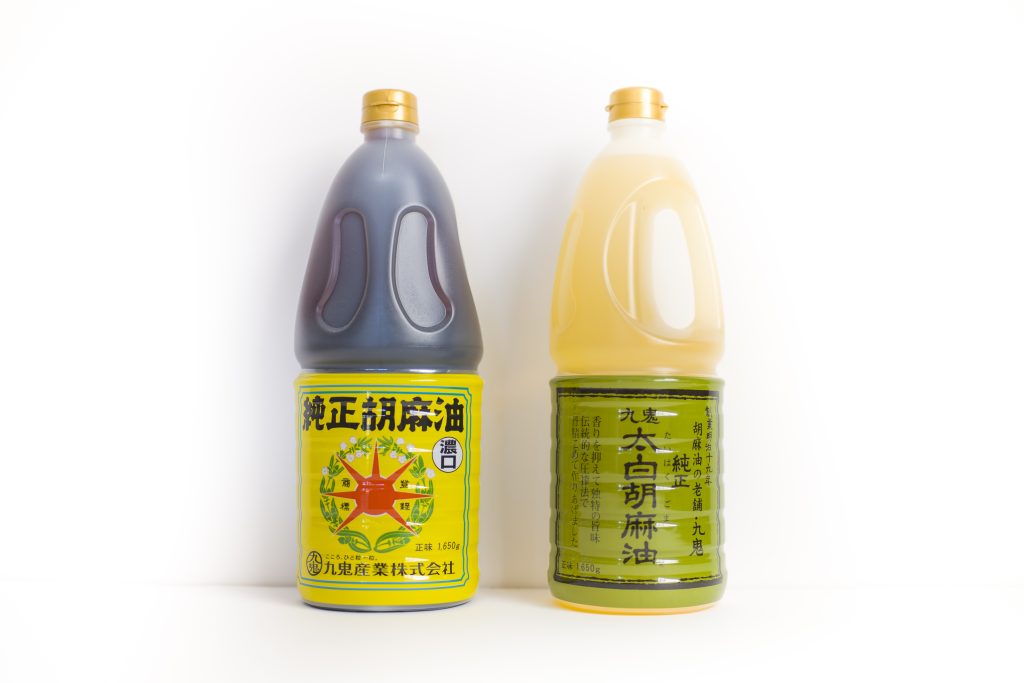
How is oil traditionally blended for tempura?
The purpose of blending oil for tempura is to obtain the frying characteristics and flavor that a particular chef desires, balanced with the cost and reusability of the oil.
For example, different famous restaurants have claimed to use:
- Three parts unroasted sesame seed oil (太白ごま油) to one part light toasted sesame seed oil
- Refined ‘salad’ oil (サラダ油) mixed with toasted sesame seed oil in the ratio of 6:4 or 7:3 depending on ingredients and preferences.
- Canola oil (菜種油) blended with Rice bran oil (こめ油)
- Eight parts blend of neutral oils with two parts toasted sesame seed oil
- Two parts cottonseed oil with to one part unroasted sesame seed oil (太白ごま油) and to one part light toasted sesame seed oil
- Commercially produced tempura oil (天ぷら油), also known as white squeezed oil (白絞油)
You’ll notice a wide variation of blends above. As previously mentioned, there is a strong association with the flavor of sesame seed oil with fried tempura. This is only a subtle addition so much so that most people might not even be aware of it. Therefore, you’ll find that most blends contain some amount of roasted sesame seed oil.
A restaurant that serves a small number of guests and spares no expense to produce the best tempura would only blend different sesame seed oils. As this is not economically viable for all restaurants, you then have places that blend salad oil or white squeezed oil with toasted sesame seed oil.
Blends of various neutral oils together attempts to improve the overall characteristics of the blended oil. For example cottonseed oil increases the stability and reusability of the blend, whilst canola oil reduces the price and improves the viscosity of the oil. Rice bran oil in turn improves the mouthfeel of the final tempura.
If you can’t obtain any of the above mentioned oils where you live, read our article on how to choose oil for tempura to gain an idea.